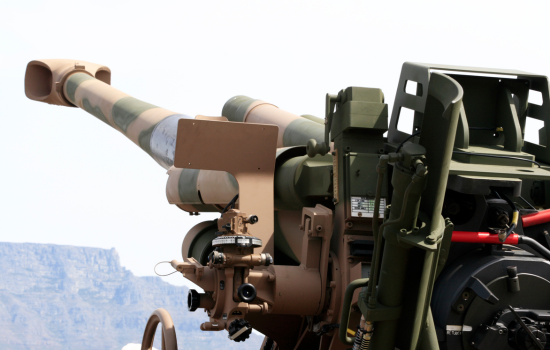Aviation Security: The Human Eye vs. Detection Technology
The second platform is the reliance on detection technology, a system familiar to every passenger checking-in at airports worldwide.
The Sept. 11, 2001 attack, followed by Richard Reid’s planned suicide mission (the ‘Shoe Bomber’), the latest plot to sabotage American aircraft departing from Heathrow airport (August 2006), as well as previous terrorist attacks such as the Pan-Am bombing (December 1988) and the ‘Nezar Hindawi’ case (April 1986), have raised the issue as to which platform offers the better capability and how airlines and countries can enhance aviation security, taking into account new tactics adopted by terrorists, such as suicide-missions or the potential to use the aircraft itself as a strategic agent in causing a mass-casualty attack, using the hijacked aircraft, whether it is a commercial jet or a crop-dusting plane and disseminating WMD (Weapons of Mass Destruction), such as chemical or biological agents.
Before discussing the issue of which of the platforms offers a better solution for the prevention of potential terrorist attacks, it is important to understand the existence of ‘Structural Discrepancy’ [1].
The term ‘Structural Discrepancy’, suggested by the author, is aimed at characterizing an actual reality of asymmetry between defensive technology compared to weaponry technology or, the arithmetical progress of security vs. geometric escalation of weapon technology.
One main explanation as to the basic conflict between offensive tactics and defensive technologies, a gap that best describes the structural discrepancy, is related to the fact that terrorism in general and aviation terrorism in particular have benefited from the initiative factor: they have the advantage of surprise, as stated by Jenkins: ‘Terrorists can attack anything, anywhere, anytime. The government cannot protect everything, everywhere, all the time'[2].
This structural discrepancy highlights the assumption that it is unlikely that defensive technology can guarantee 100% success in preventing terrorist attacks at all times. As the detectors’ technology improves, so does the weaponry, but at a greater speed. The Austrian Glock 17 handgun, made of composite plastic, cannot be detected by traditional metal detectors. It can be taken apart, hidden professionally and, in most, cases may offer the potential terrorist an advantage in that it can easily be smuggled on board and offers the terrorist the opportunity to hijack an aircraft. The Glock-17 was the challenge that necessitated the development of sophisticated detectors that would replace the traditional X-ray detectors. The Semtex explosive, perhaps the favored explosive among terrorist groups, represented the offensive side’s advantage[3].
This endless cat-and-mouse game was demonstrated in the 11 September attack, where nineteen terrorists equipped with knives and box cutters, boarded four American jets, weapons which represented the triumph of simplicity over the supremacy of detection technology. If a determined attacker is intent on targeting an aircraft, he/she will finally achieve this objective, in part or totally. The question is how airlines and nations can minimize the chances of this happening? Furthermore, the final report of the White House Commission on Aviation Safety and Security, prepared by Vice-President Al Gore, issued on 12 February 1997 (following the crash of the TWA 800 flight), has highlighted the fact that the FAA certification, as well as the security standards, were not updated following the emergence of new generations of explosives (mainly plastic), and the fact that the efficiency of the 1970s X-Ray detection technology was reduced to a degree which presented ‘security loopholes’ to the terrorists[4].
This situation requires an effective system capable of confronting the terrorists’ constant efforts to attack the aviation infrastructure, in general, and commercial aircraft, in particular.
This article will focus exclusively on civilian aircraft, taking into account two tactics adopted by terrorists:
1. Hijacking the aircraft and utilizing it as a flying missile, whilst perpetrating a suicide attack simultaneously.
2. Sabotaging the aircraft by smuggling a bomb on board either by the terrorist himself or using an unwitting passenger, a tactic which was adopted, for example, on 17 April 1986, when Nezar Hindawi planted a Semtex bomb on his fiancée, Ann Mary Murphy.
The article will emphasize the dilemma as to which of the two aforementioned security strategies offers a better solution in confronting terrorists’ plans to attack civilian aircraft.
Before analyzing case studies which could illuminate the challenges faced by decision-makers with regard to an effective security philosophy, the following table will emphasize the characteristics of the two platforms of aviation security: the reliance on the human factor (‘human eye detection’) and the machinery technology:
Human element vs. technological element:
A comparison overview
|
Human Element
|
Technology Element
|
|
Advantages:
1. Inter-personnel ability to detect suspicious passengers
2. Circumstantial element as a factor which raises human suspicions
3. Common Sense
4. Effectiveness proven in previous incidents.
|
Advantages:
1. Advanced passenger authenticity (biometrics)
2. Product homogeneity
3. No mass fatigue
4. Time saving
5. Adequate on-line database (CAPPS-‘Computer Assisted Passenger Prescreening System’)
6. Offers international standardization (ISO)
|
|
Disadvantages:
1. Lack of ‘product similarity’ between security personnel
2 .Mass-fatigue reduces security effectiveness
3. ‘Short memory’
4. Human error
5. Lack of motivation
6. Human biases.
7. Difficulty in exporting the ‘product’ to other countries.
|
Disadvantages:
1. Absence of ‘gut feeling’
2. Lack of ability to accumulate circumstantial elements
3. Ability to overpower detection technology
4. False-alarms cause the reduction of machinery sensitivity which increases probability of smuggling weaponry.
5. High cost may prevent third-world states from purchasing the technology. 6. Requires constant training and efficient supervision.
|
Focusing on the human eye detection platform may result in two opposite perspectives: FAA tests in 1978 showed that the operators failed to detect 13% of all inspected luggage, whilst in 1987, the failure rate increased to 20%. In other words, one out of five screened objects had the potential of containing explosives.
Not to mention the FAA tests in 1987, where screeners missed 20% of the potentially dangerous objects in its tests.
Later, in 2002 an inspection headed by the TSA was held at 32 airports. At Los Angeles International Airport (LAX), screeners failed to detect simulated weapons in 41% of the cases, reaching the fourth highest percentage after Cincinnati airport (58%); Las Vegas (50%); Jacksonville (50%) and Sacramento (40%). Screeners at thirty two airports, which are considered the nation’s largest airports, failed to find simulated weapons in 24% of the tests [5].
The same thing occurred between October 2005 and January 2006 (four years after the 11 September attack), when security screeners at twenty one U.S. airports, failed to find bomb-making materials during governmental tests [6] .
Another negative characteristic regarding the human factor, is related to the high turnover rate of screeners (in some cases 100% a year at some airports), alongside a low salary (minimum wage) and poor supervision, which present a suitable climate for terrorists to target an aircraft. From May 1998 to April 1999, screener turnover at nineteen of the US largest airports reached an average annual rate of 126%. Five of these nineteen airports reported a turnover of 200%, and one airport (St. Louis) reported the enormous turnover of 425 % (!)
On the other hand, one cannot disregard the critical role of trained and motivated personnel who, as proven below, have succeeded in preventing terrorists from carrying out an aerial attack which, in at least one case, could have caused the killing of 375 passengers.
On 6 September, 1970, the PFLP (Popular Front for the Liberation of Palestine) perpetrated one of the most daring attacks which, in the following decades, would affect the entire aviation industry: the Dawson Field affair.
The PFLP planned to hijack three Western airliners, including an El-Al Boeing 707, bound for New-York from Tel-Aviv.
The hero of this incident was, undoubtedly, the aircraft captain, Uri Bar-Lev. First, he succeeded in preventing the embarkation of two of the four terrorists (only Leila Khaled and Patrick Arguello succeeded in boarding, despite the security checks).
The security officer, who warned Bar-Lev of his suspicions regarding the two Senegalese passport holders, alerted Bar-Lev to the fact that ‘something was odd… I couldn’t tell exactly what, but something was wrong…causing Bar-Lev to re-check their passports’ [7]. Bar-Lev discovered that these two ‘passengers’, who had bought two first-class tickets and had checked in at the last minute, presented passports with consecutive numbers and, as a result, he refused permission for these passengers, who appeared to be two of the four terrorists, to board the Israeli airline.
Even if technology today is able to signal when two or more passports with consecutive numbers are presented and screened, it is important to remember that this event occurred more than thirty years ago, when such technology was not available, so that the human eye had to replace the technology which, as mentioned above, was unavailable at that time.
The other case study which emphasizes the critical role of the human eye detection platform, relates to the Nezar Hindawi’ case (17 April 1986), when an Israeli security officer managed to foil a Syrian-Palestinian plot to sabotage an Israeli Jumbo aircraft bound for Tel-Aviv from New-York via London, using an Irish girl named Ann Mary Murphy, who was Nezar Hindawi’s fiancée.
Hindawi’s operators succeeded in installing 1.5 Kg. of Semtex explosives, equipped with a sophisticated timer, slipping through the British security checks at Heathrow airport. Following an interview held by the author with the security officer, he admitted that there were certain suspicious signs in Murphy’s behavior.
The security officer decided to re-check Murphy’s bag, and when he picked it up and walked ten to fifteen meters away from the check-in counter to the X-ray machine, he realized that the bag was too heavy for its size and weighed at least one and a half kilos more than it should have.
The fact is that without the Israeli security officer’s ‘gut feeling’, 375 passengers could have perished. It was not the technology that prevented this deadly attack from being carried out, but a well-trained and highly motivated security officer.
The role of the ‘human eye’ was, in fact, repeated during the September 11 attack. On that day, the leader, Muhammed Atta, arrived at Portland’s airport after buying two first-class tickets via the internet for the 6 a.m. U.S. AIR flight to Boston, with a connecting flight to Los Angeles. Michael Tuohey, the ticket agent who was manning the check-in counter at the time, admitted that a $2500 first-class ticket was not an everyday occurrence. In addition, he admitted to being troubled by the expression on Atta’s face:’…He had the most hateful and angry look. I had never felt like this before…I looked at him and thought : My God, I sense terrible anger…but I said to myself: if this man does not look like an Arab terrorist, nobody does… ‘ [8].
However, the ticket agent decided, despite his ‘gut feeling’, to let Atta and his colleague, Abdul Aziz al-Mari, pass – mainly because of their bags which gave the impression that they were businessmen.
This evidence emphasizes the critical role of human inspection in observing suspicious behavior such as body-language. Suspicious answers resulting from questioning (known in Israel as the ‘profile system’), based on past incidents, clearly show that tragic results could have been foiled. These ‘suspicious signs’ cannot be detected efficiently by machinery. On the other hand, machinery does not suffer from fatigue, erosion, or short-memory relating to suspicious behavior, or from strikes caused by union policy.
However, the critical role of human inspection has certain limitations. Despite the Israeli experience, the ‘human factor’ does not produce 100% results. There have been cases where ‘passengers’ have succeeded in boarding an aircraft without a flight ticket (at least on one occasion during the 1990s, a journalist boarded an El-Al flight to Kenya, after bypassing security checks), or, when a mentally-ill male managed to reach the gate at Ben-Gurion Airport, one of the most secure airports worldwide, with a non-valid ticket, after being inspected by security personnel.
So each platform offers various advantages, as well as limitations, and the question is which of the platforms is preferable?
The answer probably lies between these two security viewpoints, by suggesting that only a calculated combination of human inspection and technology, will provide an appropriate answer to potential hijackers, suicide bombers or sabotage attempts. The success of Israeli security in preventing terrorists from targeting the most threatened airline worldwide (El Al Israel Airlines), is related to the security conception of focusing first and foremost on the passenger, and only then on his luggage, rather than almost exclusively on the luggage, as is the common practice in Western security procedures.
The Nezar Hindawi plot failed because something in Murphy’s behavior caused the Israeli security officer to re-examine her (after she had already been checked in a standard airport examination, which included an X-ray screening of her luggage). Bar-Lev’s decision not to let the two Senegalese passengers on board, was the result of their suspicious behaviour, which goaded the security personnel into alerting Bar-Lev, who decided not to let them board the El-Al aircraft and to summon the second security officer into the cockpit. Dan Issacharoff, former head of El-Al security, was quoted as saying that:…’The El-Al security system emphasizes the identification of people who could be a threat, rather than the detection of objects that could be used to hijack or destroy an airplane’ [9].
The reliance on technology has resulted in some ludicrous developments, such as United Airlines’ initiative to place a booth at the airport, where a computer would question the passengers as to whether they had been given anything to carry on board? The passenger (or terrorist) would then press either the ‘No’ button, or the ‘Yes’ button. Do they honestly believe that a potential terrorist would press the ‘Yes’ button, if he planned to hijack the aircraft or worse, blow it up in mid-air…? [10].
Whilst before the 11 September attack technology focused on the passengers’ luggage, a fact which led to the disaster, the focus now is on the passengers’ luggage, as well as on the passengers’ history. In other words, there has been a change in the thinking process. Technology should focus on the passenger as well, not only on the passenger’s luggage. Yet, as mentioned above, the human factor relating to security is vital in any future security concept. The Israeli experience clearly shows that the human eye, in combination with advanced technology, offers the best security platform, in comparison with other available security measures.
The task is how to combine these two platforms, and not which of them is preferable. The evidence clearly shows that some of the major aviation terrorist attacks could have been prevented, if a calculated combination of technology and ‘a human eye inspection’ had been adopted.
This viewpoint believes that the human eye without technology is a fantasy, but technology without the human eye is a catastrophe.
Notes:
[1] Avihai, H. (2006) ‘Evolution and escalation of aviation terrorism: From bargaining chip fashion to total destruction orientation’) Ph.D. thesis:UK, Anglia Ruskin University.
[2] Jenkins, B.M. (1999) ‘Aviation Security in the United States’ in Wilkinson, P. and Jenkins, B.M. (Eds) Aviation Terrorism and Security ,London: Frank Cass Publishers :101-111.
[3] Kidder, R M,(1990) “Why Modern Terrorism? Three Causes Springing from the Seeds of the 1960’s” in: Kegley,C.W jr.(ed.) “International Terrorism: Characteristics, Causes, Controls” (New-York: St. Martin’s Press.
[4] Gore,A.(1997) ‘White House Commission on Aviation Safety and Security- Final Report to President Clinton’ (Washington DC)
[5] Gregor,I (2002) “Airport flunks security screening tests”(July 2002) in: https://www.findarticles.com/p/articles/mi_qn4187/is_200207ai_n9863450 [March 3, 2005]
[6] The New York Times 2006, https://www.tytimes.com/reuters).
[7] Captain (Ret.) Uri Bar-Lev was interviewed by the author on 9 March 2005.
[8] National Geographic, 2005.
[9] National Academy of Sciences, 1996:13.
[10] Easterbrook, G.(2001) ‘The All-Too-Friendly Skies: Security as an Afterthought’, in: Hoge, J.f.Jr. and Rose, G.(Eds) How Did This Happen? Terrorism And The New War, New York: PublicAffairs :163-181.






